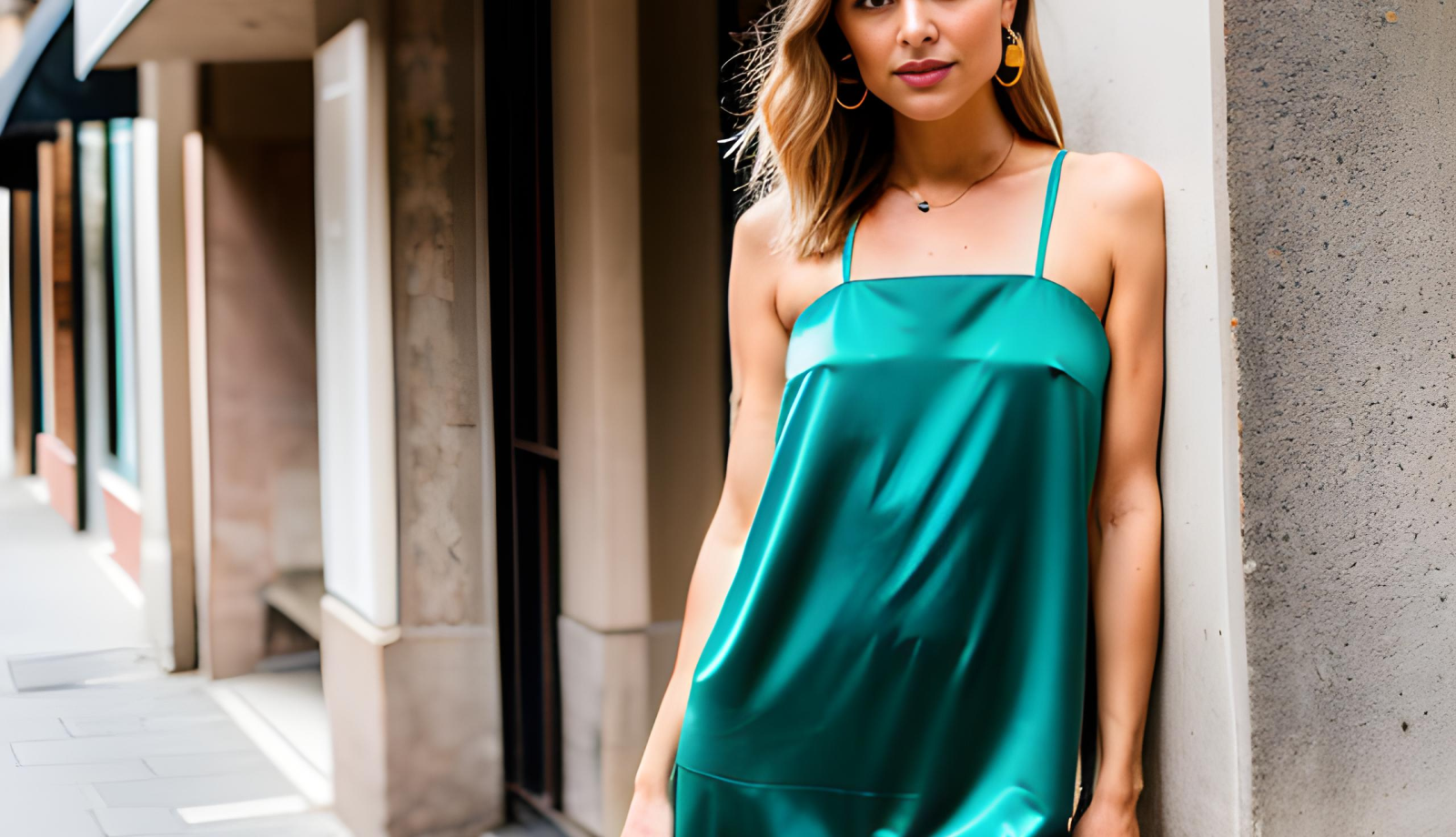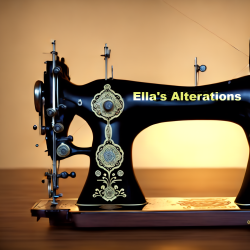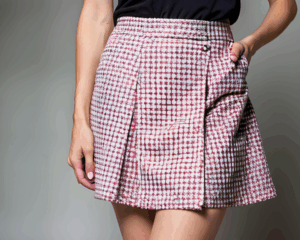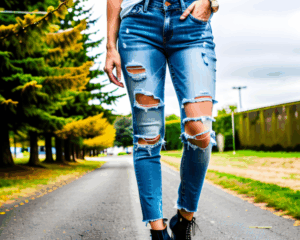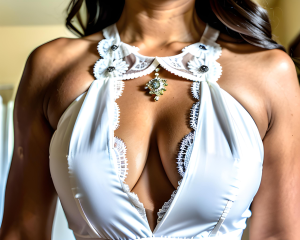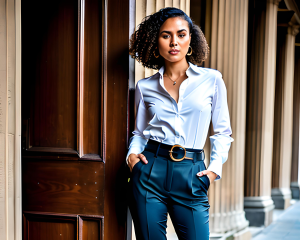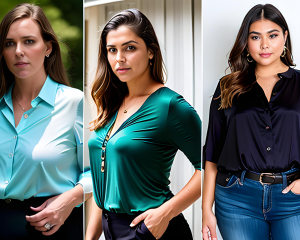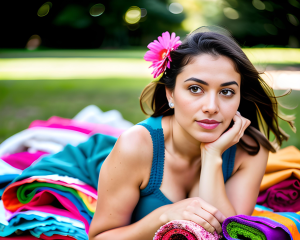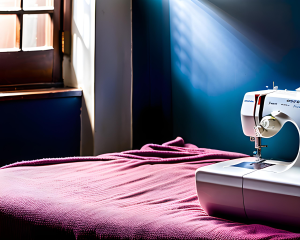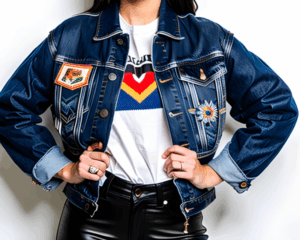The Art of Aesthetic Alterations: Tips for a Fashionable Wardrobe. | ||
|---|---|---|
Introduction:The Art of Aesthetic Alterations: Tips for a Fashionable Wardrobe. Fashion is an art form that allows individuals to express their personality and style. However, finding garments that fit perfectly off the rack can be a challenge. Aesthetic alterations offer a solution by allowing individuals to tailor their clothes to their unique body shapes and personal preferences. This essay aims to explore the art of aesthetic alterations and provide valuable tips for creating a fashionable wardrobe through alterations. By understanding body types and fit, mastering alteration techniques, choosing the right fabrics, finding skilled professionals or engaging in DIY alterations, and embracing sustainability, individuals can achieve a wardrobe that reflects their personal style. Fashion is a vibrant and ever-evolving artistic medium that enables individuals to showcase their distinctive personalities, unleash their creative instincts, and express their unique sense of style. Like an artist’s canvas, clothing serves as a platform for self-expression, allowing individuals to convey their identity and make a lasting impression on the world. However, the quest for perfectly fitting garments straight off the rack poses a significant challenge due to the inherent diversity in body shapes, sizes, and proportions among individuals. It is in this realm that the art of aesthetic alterations emerges as a transformative solution. Clothing is not merely a functional necessity; it is a means of communication and self-representation. A well-curated wardrobe reflects a person’s tastes, preferences, and aspirations. It serves as a tool for self-assurance, enabling individuals to present themselves with confidence and authenticity. However, the journey to finding impeccably fitting garments can be arduous, as mass-produced clothing often fails to cater to the unique nuances of individual body types. This is where the art of aesthetic alterations comes into play, bridging the gap between off-the-rack clothing and personalized perfection. Aesthetic alterations empower individuals to shape and mold garments to suit their individual bodies, elevating their fashion choices to new heights. It involves a meticulous and skilled approach to modifying garments, ensuring that they conform harmoniously to the wearer’s specific body shape, proportions, and preferences. Whether it is adjusting hemlines, refining waistlines, tapering sleeves, or enhancing overall fit, aesthetic alterations enable individuals to achieve a tailored and flattering look that accentuates their best features and creates a captivating silhouette. The art of aesthetic alterations recognizes the inherent beauty and diversity of the human form. It embraces the fact that each individual possesses a unique body shape, size, and proportions, and therefore, there is no one-size-fits-all solution when it comes to fashion. Through this art form, individuals are empowered to embrace and celebrate their bodies, as they can customize and refine garments to suit their specific contours and personal style. Moreover, the art of aesthetic alterations transcends the boundaries of fashion, representing a profound connection between the wearer and their clothing. It is a transformative process that nurtures a deeper appreciation for garments, as they are imbued with personal meaning and significance. By engaging in aesthetic alterations, individuals imbue their clothing with a sense of individuality and authenticity, transforming mass-produced items into cherished pieces that align with their identity and values. In essence, the art of aesthetic alterations represents a powerful tool for self-expression and empowerment within the realm of fashion. It enables individuals to transcend the limitations of off-the-rack clothing and embark on a journey of self-discovery and creativity. By embracing this art form, individuals can curate a wardrobe that not only fits flawlessly but also serves as a reflection of their unique style, personality, and self-assuredness. Through the art of aesthetic alterations, fashion becomes a true manifestation of personal artistry and an expression of one’s innermost self. The art of aesthetic alterations involves modifying and tailoring garments to achieve a personalized and impeccable fit. It allows individuals to transform ordinary clothes into extraordinary pieces that flatter their body types, highlight their best features, and create a harmonious silhouette. By understanding the principles of proper fit, mastering various alteration techniques, and utilizing the right fabrics, one can curate a fashionable wardrobe that truly reflects their style and boosts their confidence. | ||
| ||
Understanding Body Types and Fit:Identifying Your Body Type: To embark on the journey of aesthetic alterations, it is crucial to understand your body type. Each body type has its own unique characteristics and proportions, and certain styles and alterations can enhance or balance these features. By identifying your body type, you can make informed choices about alterations that will flatter your specific shape. One commonly recognized body type is the hourglass shape, characterized by a well-defined waist, with the bust and hips in proportion. For individuals with an hourglass figure, alterations should aim to accentuate the waist and highlight the curves. This can be achieved by nipping in the waistline of dresses or tops, choosing garments with defined waistlines, and avoiding boxy or shapeless silhouettes. The apple shape typically features a fuller midsection, while the bust and hips may be narrower. For apple-shaped individuals, alterations should focus on creating the illusion of a defined waist and elongating the torso. Techniques such as empire waistlines, A-line dresses, and garments with ruching or draping around the midsection can help create a more balanced and flattering silhouette. The pear shape is characterized by wider hips and a smaller bust and waist. The goal of alterations for pear-shaped individuals is to draw attention upward and create balance between the upper and lower body. Techniques such as emphasizing the shoulders with structured jackets or tops, choosing A-line skirts or dresses, and avoiding overly clingy bottoms can help achieve a more proportionate appearance. The rectangle shape is characterized by a relatively equal bust, waist, and hip measurement, with little waist definition. For individuals with a rectangle shape, alterations can focus on creating curves and adding definition to the waistline. Techniques such as belts, peplum styles, and garments with ruffles or embellishments at the waist can help create the illusion of curves and enhance the overall silhouette. The Importance of Proper Fit: Proper fit is the cornerstone of a fashionable wardrobe. It is the key to achieving a polished and put-together look. When a garment fits well, it not only enhances your appearance but also boosts your confidence. Proper fit can make you feel comfortable, poised, and self-assured, allowing you to effortlessly carry off any outfit. Ill-fitting clothes, on the other hand, can detract from your overall appearance and leave you feeling self-conscious. A well-fitting garment should follow the contours of your body without being too tight or too loose. It should highlight your assets and downplay any areas of concern. Proper fit is essential in achieving a balanced silhouette, as it ensures that the garment hangs correctly on your body, drapes elegantly, and flatters your natural shape. When garments fit properly, they also allow for ease of movement and comfort. The fabric should have enough stretch or room for you to move without feeling restricted. Additionally, proper fit contributes to the longevity of your garments. By wearing well-fitted clothes, you reduce the risk of excessive wear and tear, as the fabric is not strained or stretched beyond its limits. Common Fit Issues and Solutions: Understanding common fit issues and their corresponding solutions is essential in the art of aesthetic alterations. Whether it’s a blouse with gaping buttons, pants that are too long, or a dress that hugs in all the wrong places, knowing how to address these issues empowers you to transform your wardrobe into a collection of perfectly tailored garments. One common fit issue is garments being too tight or too loose in certain areas. This can result in uncomfortable restrictions or an unflattering silhouette. Solutions to these issues include taking in or letting out seams, adjusting darts or pleats, or adding or removing fabric panels to achieve the desired fit. Uneven hems are another common fit issue that can disrupt the overall aesthetic of a garment. Whether it’s a dress or a pair of pants, an uneven hemline can make the garment appear sloppy or ill-fitting. Alterations such as hemming or adjusting the length can help create a harmonious hemline that enhances the overall look. Ill-fitting sleeves can also pose challenges in achieving a polished fit. Sleeves that are too long or too short can throw off the balance of a garment and distract from its overall appeal. Alterations such as shortening or lengthening sleeves, adjusting sleeve width, or addressing shoulder fit issues can result in sleeves that flatter your arms and create a balanced silhouette. By identifying these common fit issues and understanding the corresponding solutions, you can tackle them head-on through alterations, ensuring that your garments fit impeccably and enhance your personal style. Through the art of aesthetic alterations, you have the power to transform ordinary clothes into extraordinary pieces that fit you like a glove and make a statement wherever you go. | ||
| ||
| Ella’s Alterations LLC 813-445-8894 https://ellasalterations.com | ||
Alteration Techniques:The art of aesthetic alterations encompasses a wide range of techniques that can be employed to modify garments and achieve an optimal fit. From hemming and length adjustments to waist and side seam alterations, the possibilities for transforming and tailoring garments are endless. By mastering these alteration techniques, you can unlock the potential of your wardrobe and create garments that accentuate your body’s unique shape and proportions. Hemming and Length Adjustments: Hemming and length adjustments are fundamental alteration techniques that can make a significant difference in the overall fit and appearance of a garment. Whether it’s shortening a pair of pants, adjusting the length of a skirt, or hemming a dress, these alterations can drastically change the look and fit of a garment to suit your preferences and body proportions. One common approach to hemming is to fold the fabric and stitch it in place, concealing the raw edge. This technique, known as a double-fold hem, creates a clean and professional finish. For more delicate fabrics or garments with decorative edges, a narrow rolled hem can be used to achieve a refined and elegant look. When adjusting the length of pants or skirts, it’s important to consider the desired final appearance. For example, pants that are intended to be worn with heels may require a longer length, while those intended for flats may need to be shorter. Taking into account your footwear preferences and ensuring the hemline falls at a flattering point on your leg will result in a more balanced and visually appealing silhouette. Waist and Side Seam Alterations: The waist and side seams of a garment play a significant role in creating a flattering silhouette. Alterations in these areas can help tailor the garment to your specific measurements and enhance your natural body shape. If a garment is too loose around the waist, it can be taken in by adjusting the side seams or adding darts to create a more fitted look. On the other hand, if a garment is too tight, the side seams can be let out or additional fabric can be inserted to provide more room. Adjusting the side seams can also address issues related to the overall fit of a garment. For instance, if a dress or top is too boxy and lacks shape, taking in the side seams can create a more defined waistline and improve the overall silhouette. Conversely, if a garment is too tight across the bust or hips, letting out the side seams can provide a more comfortable and flattering fit. Dart and Pleat Adjustments: Darts and pleats are common design elements used to add shape and structure to garments. They can be adjusted or repositioned through alterations to achieve a more customized fit. Darts are typically used to create a tapered shape, allowing a garment to contour to the curves of the body. By adjusting the length or width of a dart, you can modify the way a garment fits around the bust, waist, or hips. This alteration technique is particularly useful for achieving a more flattering fit in tailored tops, dresses, and jackets. Pleats, on the other hand, are folds of fabric that provide fullness and movement to a garment. They can be altered by adjusting the depth or width of the pleat to achieve the desired look and fit. Whether it’s pleated skirts or trousers, understanding how to modify pleats through alterations allows for customization based on personal preferences and body proportions. Shoulder and Sleeve Alterations: Shoulder and sleeve alterations play a vital role in achieving a well-fitted and comfortable garment. Ill-fitting shoulders can affect the overall balance and drape of a garment, while sleeve length and width can impact both aesthetics and functionality. Shoulder adjustments may involve reshaping the shoulder seam, either by raising or lowering it, to align with your natural shoulder line. This alteration technique is particularly important for tailored jackets, blazers, and dresses. Proper shoulder fit ensures that the garment hangs correctly and prevents unsightly shoulder seams from slipping off or cutting into the arm. Sleeve alterations can address issues such as sleeves that are too long, too short, or too wide. By adjusting the sleeve length, either by shortening or lengthening, you can ensure that the sleeves end at the most flattering point on your arm. Additionally, tapering the width of sleeves can create a more streamlined and polished look, particularly for garments with fitted sleeves such as blouses or jackets. These alteration techniques represent just a glimpse into the vast array of possibilities when it comes to transforming and tailoring garments. By mastering these techniques and understanding the nuances of garment construction, you gain the ability to customize your wardrobe to fit your unique body shape and style preferences. The art of aesthetic alterations empowers you to unlock the full potential of your clothing, ensuring that each garment becomes a personal masterpiece that reflects your individuality and showcases your impeccable taste. | ||
| ||
| The Magic of Alterations: Maximizing Your Wardrobe Potential. | ||
| Ella’s Alterations LLC 813-445-8894 https://ellasalterations.com | ||
Choosing the Right Fabrics:When it comes to the art of aesthetic alterations, selecting the right fabrics is crucial. The choice of fabric not only affects the overall appearance and feel of a garment but also influences how well it can be altered and tailored to achieve the desired fit and aesthetic. By understanding the characteristics of different fabrics, you can make informed choices that will enhance the success of your alteration projects. Consider Fabric Weight and Structure: The weight and structure of a fabric play a significant role in how well it can be altered and tailored. Lightweight and medium-weight fabrics are generally more versatile and easier to work with, as they are more pliable and lend themselves well to various alteration techniques. Fabrics such as cotton, linen, silk, and rayon fall into this category and are commonly used in garments that require alterations. Heavier fabrics, such as wool, denim, or heavy knits, can also be altered but may require more effort and expertise. These fabrics are less forgiving and may require special techniques, such as reinforcing seams or using heavier-duty sewing equipment, to achieve desired alterations. When working with heavier fabrics, it is important to ensure that the alterations maintain the structural integrity and balance of the garment. Stretch Fabrics and Their Considerations: Stretch fabrics, such as spandex blends or knits, offer a unique set of considerations when it comes to aesthetic alterations. These fabrics have inherent stretch and recovery properties, which can make them more forgiving and accommodating to body shape variations. However, altering stretch fabrics requires specific techniques to preserve the fabric’s stretch and prevent distortion. When altering stretch fabrics, it is important to use appropriate stretch stitches or techniques, such as zigzag stitches or twin needles, to maintain the fabric’s elasticity. Additionally, care should be taken to ensure that the alterations do not overly tighten or loosen the fabric, as this can affect both the fit and the overall appearance of the garment. Consulting a professional or conducting thorough research on alteration techniques for stretch fabrics is recommended to achieve the best results. Pattern and Print Considerations: Fabrics with patterns or prints present unique challenges when it comes to aesthetic alterations. It is important to consider how alterations may affect the overall pattern placement and visual continuity of the garment. Alterations that involve removing or adding fabric may disrupt the pattern, resulting in a mismatched or unbalanced appearance. When working with patterned or printed fabrics, it is essential to plan alterations carefully. Simple alterations, such as hemming or adjusting side seams, may have minimal impact on the pattern. However, more complex alterations, such as dart adjustments or panel additions, may require additional considerations to ensure that the pattern is preserved or appropriately realigned. Test and Experiment: Before embarking on significant alterations, it is advisable to conduct fabric tests and experiments. This involves working with small fabric swatches or scraps to practice alteration techniques and gauge how the fabric responds. Testing allows you to evaluate the feasibility of alterations, assess any challenges or limitations, and fine-tune your approach before applying the techniques to the actual garment. By testing different alteration techniques on fabric scraps, you can gain valuable insights into how the fabric behaves, how the alterations affect its structure and drape, and what adjustments may be needed for optimal results. This experimental approach provides an opportunity to refine your skills, build confidence, and avoid potential mistakes or irreversible alterations on the actual garment. Choosing the right fabrics for your alteration projects is an essential step in achieving successful outcomes. By considering fabric weight, stretch properties, pattern considerations, and conducting tests and experiments, you can make informed decisions that will enhance the alteration process and result in garments that not only fit impeccably but also showcase the beauty and potential of the chosen fabrics. | ||
| ||
DIY Alterations: Tips and TechniquesEngaging in do-it-yourself (DIY) alterations can be a rewarding and cost-effective way to customize your wardrobe. Whether you’re a seasoned sewing enthusiast or a beginner looking to explore the world of garment alterations, the following tips and techniques will help you navigate the process with confidence and achieve professional-looking results. Start with Simple Alterations: If you’re new to garment alterations, it’s best to start with simple projects that require minimal adjustments. Begin by altering garments that have straightforward construction, such as hemming pants or skirts, taking in side seams, or shortening sleeves. These alterations provide an excellent foundation for building your alteration skills and gaining confidence in your abilities. Starting small also allows you to familiarize yourself with different fabrics, sewing techniques, and tools. As you become more comfortable, you can gradually progress to more complex alterations, such as adjusting darts, reshaping necklines, or adding decorative elements. Remember, practice makes perfect, so take your time and enjoy the learning process. Invest in Essential Tools and Equipment: Having the right tools and equipment is essential for achieving successful DIY alterations. Some essential items you will need include: Sewing machine: A good-quality sewing machine makes the alteration process faster and more efficient. Choose a machine that suits your needs and budget, and ensure it is in proper working condition. Sewing needles: Invest in a variety of sewing needles suitable for different fabrics and techniques. Sharps, ballpoints, and stretch needles are common types used for garment alterations. Thread: Stock up on a range of thread colors to match your garments. Polyester or cotton thread is versatile and works well for most alterations. Measuring tools: Accurate measurements are crucial for achieving precise alterations. Invest in a tape measure, ruler, and a dressmaker’s curve for shaping and adjusting patterns. Seam ripper: A seam ripper is handy for undoing stitches and removing unwanted seams or stitches during alterations. Pins and marking tools: Use pins to hold fabric in place while working and marking tools such as fabric chalk or washable markers to mark alterations and measurements. Iron and ironing board: Proper pressing and ironing are essential for achieving professional-looking alterations. An iron and ironing board will help you achieve crisp seams and ensure a polished finish. Take Accurate Measurements: Accurate measurements are the foundation of successful alterations. Before making any adjustments, take precise measurements of your body and the garment. Use a tape measure and follow a measurement guide to ensure consistency. When measuring yourself, stand naturally with good posture and avoid pulling the tape too tightly or too loosely. Measure key areas such as bust, waist, hips, inseam, and arm length. Compare these measurements with the garment’s measurements to determine the required alterations. Remember that different garments may require specific measurements. For example, pants may require waist, hip, and inseam measurements, while dresses may require bust, waist, and hip measurements. Taking thorough measurements will help you identify areas that need adjustment and guide your alteration process. Practice Seam Finishes and Techniques: Seam finishes play a vital role in the overall appearance and durability of your alterations. Practice different seam finishes to achieve clean and professional-looking results. Common seam finishes include: Zigzag stitch: Use a zigzag stitch along the raw edges of fabrics to prevent fraying. This finish is suitable for most fabrics and is easy to execute. French seam: A French seam encloses raw edges within the seam itself, resulting in a neat and clean finish. This finish works well for lightweight and delicate fabrics. Overlock or serger finish: If you have access to an overlock or serger machine, use this finish to trim and enclose raw edges simultaneously. It creates a professional and clean edge. Bias binding: Bias binding is a technique where fabric strips are used to encase and finish raw edges. It adds durability and a decorative touch to your alterations. Experiment with different seam finishes on fabric scraps to determine which techniques work best for the specific fabric and garment you’re altering. Practice sewing straight seams, curves, and corners to improve your sewing skills and achieve precise and professional finishes. Seek Inspiration and Resources: The world of DIY alterations is vast, and there are abundant resources available to inspire and guide you. Seek inspiration from fashion magazines, online platforms, and social media for ideas on alterations, styling, and trends. Look for tutorials, blogs, and video demonstrations that provide step-by-step instructions and helpful tips for specific alteration projects. Online communities and forums dedicated to sewing and alterations can also be valuable resources. Engage with fellow enthusiasts, ask questions, and share your experiences. Participating in these communities can provide guidance, support, and a platform to showcase your achievements. Additionally, consider investing in sewing or alteration books that offer in-depth guidance on specific techniques, pattern alterations, and garment construction. These resources can serve as comprehensive references and inspire you to explore new possibilities in your alteration projects. DIY alterations offer a rewarding opportunity to personalize your wardrobe and showcase your creativity. By starting with simple projects, acquiring essential tools, taking accurate measurements, practicing seam finishes, and seeking inspiration and resources, you can develop your alteration skills and achieve impressive results. Embrace the journey of transforming garments into unique pieces that reflect your style and fit you perfectly. | ||
| ||
| ||
| Vintage Revival: Owning the Aesthetic with 80s Hand-Me-Down Wedding Dresses! | ||
Styling Tips for Altered GarmentsOnce you have successfully altered your garments to achieve the perfect fit, it’s time to explore various styling techniques to enhance your overall look. Styling plays a crucial role in showcasing your altered garments and creating fashionable outfits. Here are some tips to help you make the most of your altered wardrobe: Experiment with Proportions: Altering garments allows you to tailor them to your specific body proportions. Embrace this newfound freedom by experimenting with different proportions in your outfits. For example, if you have taken in the waist of a dress or top to create a more defined silhouette, pair it with bottoms that add volume, such as wide-leg pants or a flared skirt. This creates a balanced and visually interesting ensemble. On the other hand, if you have shortened the length of a skirt or dress, consider pairing it with a cropped top to create the illusion of longer legs. Playing with proportions adds a dynamic and fashion-forward element to your outfits, making them visually appealing and stylish. Use Belts for Definition: Belts are excellent accessories for accentuating your waistline and adding definition to altered garments. When wearing dresses, blouses, or jackets that have been taken in at the waist, cinching them with a belt creates a flattering hourglass shape. Opt for belts that complement the color and style of your garment, and experiment with different widths and buckle designs to suit your personal style. Additionally, belts can be used to create a high-waisted look by cinching them over dresses or tops that have been altered to sit higher on your torso. This instantly elevates the style and adds a touch of sophistication to your outfit. Layering for Dimension: Layering is a versatile styling technique that adds depth and dimension to your outfits. Experiment with layering altered garments to create unique and stylish combinations. For example, layer a cropped jacket or cardigan over a tailored blouse that has been taken in at the waist. This adds visual interest and showcases the details of each altered piece. You can also layer altered tops with different necklines to create a multi-dimensional look. Pair a V-neck top with a collared shirt peeking out from underneath or layer a sleeveless top over a fitted long-sleeved shirt. These combinations add depth to your outfit while highlighting the alterations you’ve made. Play with Accessories: Accessories are powerful tools for transforming and elevating your altered garments. Experiment with various accessories to enhance the overall look and create a stylish statement. Here are some ideas: Statement jewelry: Pairing bold and eye-catching jewelry, such as chunky necklaces or oversized earrings, with your altered garments can instantly elevate your outfit and draw attention to the altered details. Scarves and belts: Scarves can be worn as headbands, tied around the neck, or used as belt accessories. Belts can be embellished with statement buckles or unique textures to add interest and personalize your altered garments. Shoes and bags: Consider the footwear and bags you pair with your altered garments. Choose styles that complement the overall aesthetic and add a finishing touch to your look. Experiment with different shoe silhouettes, such as heels, flats, or boots, to create varied looks. Embrace Tailored Styling: Altered garments are tailor-made to fit your body, so embrace tailored styling techniques to showcase their impeccable fit. Tuck in tops or blouses that have been taken in at the waist to create a polished and put-together appearance. When wearing altered pants or skirts, opt for tops that complement the altered silhouette and create a balanced look. Tailored styling also involves paying attention to the details. Ensure that altered sleeves sit at the appropriate length and shape, and consider cuffing or rolling sleeves for a casual and trendy touch. Take advantage of the altered proportions to create clean lines and a cohesive overall look. Styling plays a significant role in showcasing your altered garments and creating fashionable outfits. By experimenting with proportions, using belts for definition, layering for dimension, playing with accessories, and embracing tailored styling techniques, you can maximize the impact of your altered wardrobe. Enjoy the process of creating stylish ensembles that highlight your unique alterations and personal style. | ||
| Ella’s Alterations LLC 813-445-8894 https://ellasalterations.com | ||
| ||
Sustainability and Aesthetic Alterations:In today’s world, where sustainability and responsible consumption are increasingly important, aesthetic alterations offer a valuable approach to promote a more sustainable fashion industry. By altering and reviving existing garments, you can contribute to reducing waste, minimizing your environmental footprint, and embracing a more conscious approach to fashion. Here are some key aspects to consider when it comes to sustainability and aesthetic alterations: Extending the Lifespan of Garments: One of the fundamental principles of sustainability is extending the lifespan of garments. Aesthetic alterations allow you to breathe new life into your wardrobe by transforming outdated or ill-fitting pieces into stylish and wearable garments. Instead of discarding them, consider alterations as an opportunity to reimagine and reinvent your clothes. By altering and repairing garments, you reduce the need for purchasing new items and help combat the throwaway culture that contributes to environmental degradation. Embrace the concept of slow fashion, where quality and longevity take precedence over fast-paced trends, and invest in alterations that allow you to continue wearing and enjoying your favorite pieces for years to come. Reducing Textile Waste: The fashion industry is notorious for generating vast amounts of textile waste. Through aesthetic alterations, you can actively contribute to reducing this waste. Instead of disposing of garments that no longer fit or are out of style, explore alteration options to make them suitable for your current preferences and body shape. During the alteration process, be mindful of minimizing waste. Reuse fabric scraps for small repairs or as embellishments for other garments. Donate excess fabric to local sewing or crafting communities, where they can be repurposed into various creative projects. By taking these small steps, you actively participate in reducing textile waste and promote a more sustainable fashion ecosystem. Personalization and Individuality: Aesthetic alterations provide a unique opportunity to express your individuality and personal style. By customizing your garments to fit your body shape, altering details, or adding personalized touches, you create one-of-a-kind pieces that reflect your personality. This approach counters the uniformity often associated with mass-produced fashion and encourages a more diverse and inclusive representation of style. Celebrate your uniqueness by embracing alterations as a means to create a wardrobe that is authentically yours and stands out from the crowd. Local and Ethical Production: Engaging in aesthetic alterations supports local artisans, tailors, and sewing professionals. Instead of relying solely on mass-produced fashion, consider seeking the expertise of local alteration specialists who can help bring your vision to life. Supporting local artisans and tailors promotes ethical and fair production practices, as well as strengthens local economies. By investing in skilled craftsmanship, you contribute to the preservation of traditional sewing techniques and support the livelihoods of individuals who prioritize quality and sustainability. Conscious Consumption: Aesthetic alterations encourage a more conscious approach to consumption. Instead of mindlessly purchasing new clothes, take stock of your existing wardrobe and assess which garments can be altered to suit your current needs and preferences. This mindful consideration helps you make informed decisions about what you truly need and prevents unnecessary purchases. Before embarking on alterations, carefully evaluate the quality and durability of the garment. Choose well-made pieces that have the potential for multiple alterations over time, allowing you to adapt them to changing trends and personal style. By doing so, you invest in a wardrobe that is thoughtfully curated and reduces the environmental impact associated with fast fashion. Incorporating aesthetic alterations into your fashion journey aligns with the principles of sustainability and responsible consumption. By extending the lifespan of garments, reducing textile waste, embracing personalization, supporting local production, and adopting conscious consumption practices, you can actively contribute to a more sustainable and ethical fashion industry. Aesthetic alterations empower you to create a wardrobe that is not only fashionable but also environmentally conscious and uniquely reflective of your personal style. | ||
| ||
Conclusion:The art of aesthetic alterations opens up a world of possibilities for creating a fashionable wardrobe that is unique, personalized, and sustainable. Throughout this essay, we have explored the various aspects of mastering the art of aesthetic alterations, from understanding body types and fit to choosing the right fabrics, from DIY alteration techniques to styling tips, and finally, the importance of sustainability in the alteration process. Fashion is not just about following trends but expressing one’s individuality and creativity. A well-curated wardrobe reflects your personality, values, and style preferences. Aesthetic alterations provide a means to achieve that perfect fit and transform garments into pieces that truly resonate with you. Understanding your body type and fit is essential in achieving successful alterations. By comprehending the unique proportions and curves of your body, you can modify garments to flatter your silhouette and enhance your natural features. This understanding enables you to make informed decisions when selecting fabrics that drape and move gracefully on your body. Engaging in DIY alterations empowers you to take control of your wardrobe and unleash your creativity. Starting with simple projects and gradually building your skills allows you to gain confidence in your abilities and develop a deeper understanding of garment construction and sewing techniques. With the right tools, precise measurements, and practice, you can achieve professional-looking alterations that rival those of a skilled tailor. Choosing the right fabrics is crucial for both the comfort and aesthetics of your altered garments. Understanding the characteristics of different fabrics helps you select materials that are suitable for specific alteration projects. By considering factors such as drape, stretch, and durability, you can ensure that the fabrics you choose enhance the overall appearance and functionality of your garments. Styling altered garments is an art in itself. Experimenting with proportions, utilizing belts for definition, layering for dimension, and incorporating accessories are key techniques to enhance the visual impact of your altered pieces. By embracing tailored styling, you can showcase the impeccable fit and clean lines achieved through alterations. Sustainability lies at the core of aesthetic alterations. By extending the lifespan of garments, reducing textile waste, supporting local artisans, and practicing conscious consumption, you actively contribute to a more sustainable fashion industry. Alterations allow you to revive and reimagine existing pieces, reducing the need for new purchases and minimizing your environmental footprint. In conclusion, the art of aesthetic alterations offers a transformative journey towards a fashionable, personalized, and sustainable wardrobe. By understanding your body, acquiring the necessary skills, embracing creativity, and adopting conscious practices, you can unlock the true potential of your garments. With each alteration, you create a unique and meaningful connection to your clothes, expressing your style and values while promoting a more conscious and ethical approach to fashion. Let the art of aesthetic alterations be your canvas for self-expression, and enjoy the process of curating a wardrobe that is truly one-of-a-kind. The Art of Aesthetic Alterations: Tips for a Fashionable Wardrobe. #AestheticAlterations #FashionRevival #PersonalizedStyle #SustainableFashion #DIYAlterations #WardrobeMakeover #FashionCreativity #PerfectFit #BodyPositivity #SlowFashion #ReduceReuseAlter #StylingTips #ConsciousConsumption #FashionEmpowerment #TailoredStyle #FashionTransformation #ZeroWasteFashion #EcoFashion #UniqueWardrobe #FashionExpression #EllasAlterationsLLC | ||
| ||
| ||
| Ella’s Alterations LLC 813-445-8894 https://ellasalterations.com | ||
| The Magic of Alterations: Maximizing Your Wardrobe Potential. | ||
|
The Art of Aesthetic Alterations: Tips for a Fashionable Wardrobe.
